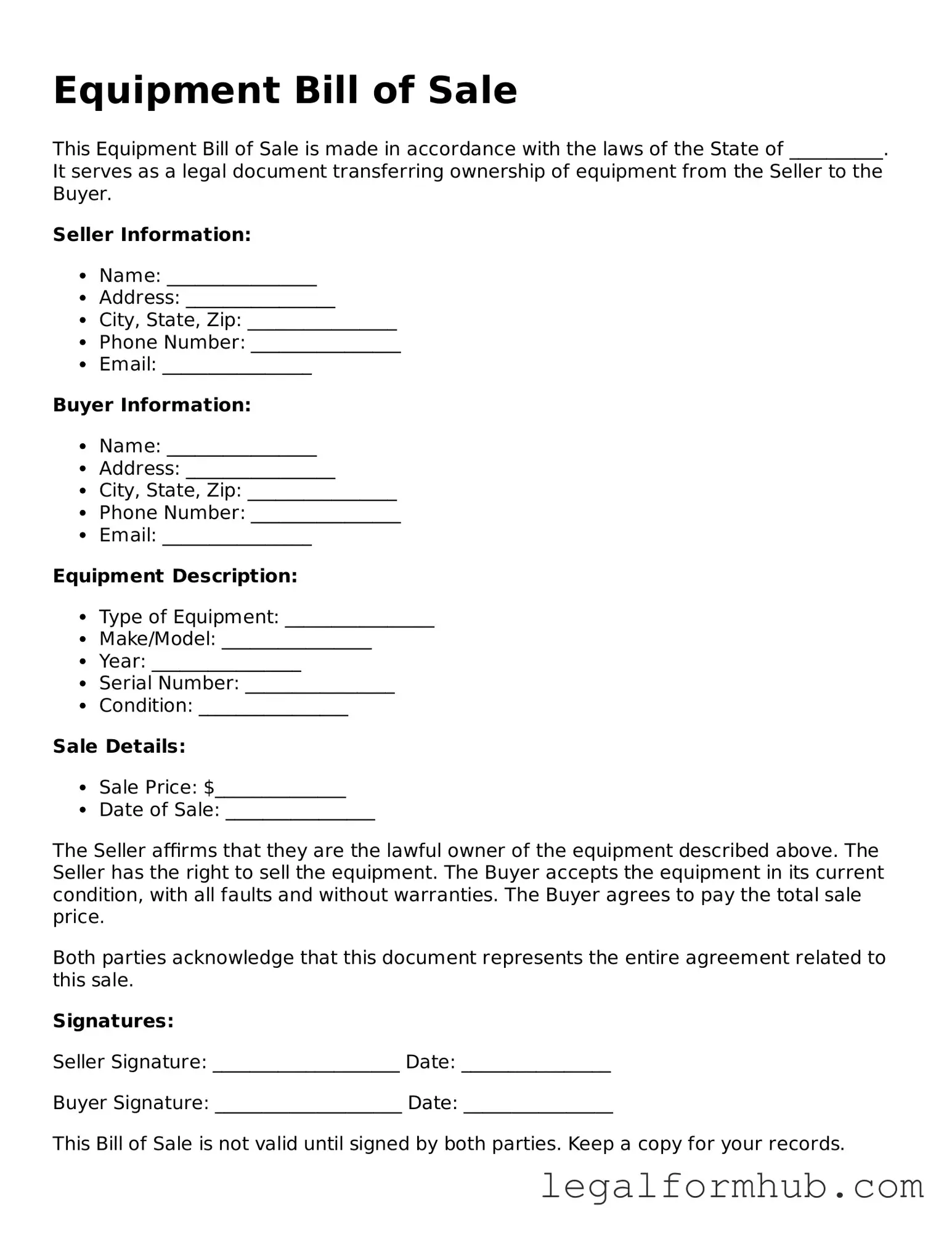The Equipment Bill of Sale form shares similarities with the Vehicle Bill of Sale. Both documents serve to transfer ownership from one party to another. They include essential details such as the names of the buyer and seller, a description of the item being sold, and the sale price. Additionally, both forms often require signatures from both parties to finalize the transaction, ensuring that the sale is legally binding.
Another document that resembles the Equipment Bill of Sale is the Real Estate Bill of Sale. While this document pertains to the sale of real property rather than equipment, it also outlines the transfer of ownership. Like the Equipment Bill of Sale, it includes the names of the parties involved, a detailed description of the property, and the agreed-upon sale price. Both documents aim to protect the interests of both buyer and seller during the transaction.
The Equipment Bill of Sale is also similar to the Personal Property Bill of Sale. This document covers a wide range of personal items, including furniture, electronics, and collectibles. It provides a clear record of the transaction, detailing the item, its condition, and the sale price. Both forms serve to document the exchange of ownership and can be used as proof in case of disputes.
Another comparable document is the Boat Bill of Sale. This form is specifically designed for the sale of boats and other watercraft. Like the Equipment Bill of Sale, it includes information about the buyer and seller, a description of the boat, and the purchase price. Both documents ensure that the transfer of ownership is clearly recorded and legally recognized.
The Equipment Bill of Sale also parallels the Mobile Home Bill of Sale. This document is used when selling mobile homes and includes similar elements, such as the names of the parties, a description of the mobile home, and the sale price. Both forms are essential for documenting the transfer of ownership and can help avoid future disputes between the parties involved.
When dealing with vehicle transactions, it's essential to have the proper documentation in place to facilitate a smooth transfer of ownership. A critical form in this process is the Florida Motor Vehicle Bill of Sale, which provides a detailed record of the transaction, including vital information about the vehicle and the parties involved. This ensures that both the buyer and seller have clear evidence of the sale. If you're looking to streamline your vehicle sale process, you can easily access the necessary documents, such as the Florida Motor Vehicle Bill of Sale, through Fill PDF Forms for your convenience.
Lastly, the Machinery Bill of Sale is another document that closely resembles the Equipment Bill of Sale. This form is specifically for the sale of machinery, often used in industrial or agricultural settings. It includes the buyer and seller's information, a detailed description of the machinery, and the sale price. Both documents serve the same purpose: to facilitate the legal transfer of ownership and protect the rights of both parties in the transaction.
